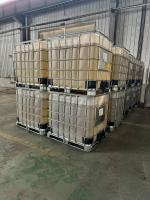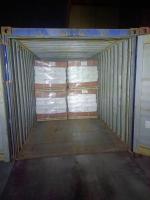Our Products
Product Center / what is function of polyamine in mineral processing

Polyamines are versatile organic compounds that have found extensive applications in mineral processing due to their unique chemical structure and functional properties. Their multiple amine groups provide a means for various interactions with mineral surfaces, making them valuable in several stages of mineral beneficiation. In this discussion, we will explore in detail the functions of polyamines in mineral processing, including their roles as collectors, flocculants, dispersants, dewatering agents, and agents for improving mineral recovery and selectivity.
1. Collectors in Flotation
One of the most significant functions of polyamines in mineral processing is their use as flotation collectors. Flotation is a separation process that exploits the differences in surface properties between valuable minerals and gangue (waste) materials. The collectors are reagents that selectively adsorb onto the surfaces of target minerals, rendering them hydrophobic so that they can attach to air bubbles and rise to the surface for separation.
Polyamines, when used as collectors, are tailored with specific molecular structures to ensure selective adsorption onto mineral surfaces. For instance, in phosphate flotation, polyamine collectors can be designed to preferentially interact with phosphate minerals while minimizing interaction with impurities such as silicates or clay minerals. The polyamine molecules attach to the mineral surfaces via electrostatic and hydrogen-bonding interactions, altering the surface energy of the mineral particles. This modification makes the particles more amenable to attachment to air bubbles during flotation. Once attached, the bubbles rise through the slurry, forming a froth that is collected and further processed to recover the valuable mineral.
The effectiveness of polyamine collectors in flotation is enhanced by their ability to operate over a range of pH levels and their adaptability to different ore types. Their molecular flexibility allows them to be modified to target specific minerals, which increases the selectivity of the flotation process and reduces the recovery of unwanted gangue materials.
2. Flocculants and Dewatering Agents
Another critical function of polyamines in mineral processing is as flocculants. Flocculation is the process of aggregating fine particles into larger clusters (flocs) to facilitate their removal from the slurry. In many mining operations, ores are finely ground to liberate valuable minerals from the gangue. However, this fine grinding produces particles that are difficult to separate and dewater due to their high surface area and colloidal behavior.
Polyamine-based flocculants are particularly effective in this context. When added to a slurry, cationic polyamines interact with the negatively charged surfaces of fine mineral particles. The polyamines neutralize the surface charges, reducing the electrostatic repulsion between particles and encouraging aggregation. As a result, larger flocs are formed, which settle more rapidly during sedimentation or are more easily captured in filtration processes.
Efficient dewatering is crucial because it reduces the water content of the mineral concentrate and tailings, lowering transportation costs and enhancing the overall efficiency of the mineral processing plant. Moreover, improved dewatering minimizes the environmental impact by reducing the volume of water that must be managed and treated.
3. Dispersants for Enhanced Process Control
While polyamines are effective as flocculants, they also serve as dispersing agents under different process conditions. Dispersants are chemicals that help to prevent the agglomeration of particles by providing a repulsive force between them. In certain mineral processing applications, particularly where fine clay particles are present, the undesired aggregation of particles can interfere with the separation processes such as flotation or leaching.
Polyamine dispersants adsorb onto the surfaces of mineral particles and impart a positive charge. This charge repulsion prevents the particles from clumping together, thereby maintaining a stable and uniform slurry. Such control is vital in processes where the size distribution of particles plays a significant role in the efficiency of separation. For example, in the flotation of sulfide ores or in the extraction of fine metal particles, controlling the dispersion of particles ensures that reagents can interact effectively with the mineral surfaces and that the overall recovery of valuable minerals is maximized.
4. Enhancing Mineral Recovery and Selectivity
One of the overarching goals in mineral processing is to maximize the recovery of valuable minerals while minimizing the recovery of impurities. Polyamines contribute significantly to this goal through their dual role as collectors and modifiers of surface chemistry. By carefully designing the molecular structure of polyamines, metallurgists can enhance their selectivity towards target minerals. This selectivity is essential when processing complex ores containing multiple minerals with similar physical properties but different chemical compositions.
For example, in the flotation of complex ores containing both valuable sulfide minerals and unwanted silicates, polyamines can be engineered to preferentially adsorb onto the sulfide surfaces. The result is an improved separation efficiency where the valuable mineral concentrate has a higher grade, and the amount of discarded waste (gangue) is minimized. This not only improves the economic viability of the mineral processing operation but also contributes to more sustainable practices by reducing waste generation.
5. Environmental Considerations and Process Optimization
Environmental management is a crucial aspect of modern mineral processing, and polyamines offer several benefits in this regard. The ability of polyamines to improve the dewatering process, for instance, directly impacts the volume of water used and the generation of tailings. Enhanced dewatering leads to drier tailings, which are easier to manage and pose a reduced risk of contaminating surrounding water bodies. This improvement in water efficiency is particularly important in regions where water resources are scarce or where strict environmental regulations are in place.
Moreover, the use of polyamine reagents can potentially reduce the reliance on more hazardous chemicals traditionally used in mineral processing. In many conventional flotation operations, collectors such as xanthates are employed despite their environmental toxicity. Polyamines, being less hazardous, present an attractive alternative that can achieve similar or even improved performance with a lower environmental footprint.
6. Practical Applications Across Various Mineral Types
Polyamines are not limited to a single mineral processing scenario; their functionality spans across various types of ores. In coal beneficiation, for example, polyamine reagents help to improve the separation of coal from impurities such as shale and clay, leading to a higher quality product. In the processing of phosphate ores, polyamines assist in efficiently separating phosphate minerals from associated silicate materials, which is critical for the production of high-grade phosphate concentrates.
Additionally, in the recovery of base metals such as copper, nickel, and zinc, polyamines play a role in optimizing flotation performance. The selectivity and recovery improvements provided by polyamines contribute to more efficient extraction processes, lower reagent consumption, and overall better economic outcomes for the mining operation.
Conclusion
In summary, polyamines serve multiple functions in mineral processing that are pivotal to the efficiency and sustainability of the operation. Their role as collectors in flotation, flocculants in dewatering, and dispersants in controlling particle agglomeration highlights their versatility. By enhancing mineral recovery and selectivity, polyamines contribute to higher quality concentrates and reduced waste generation. Furthermore, their ability to optimize water usage and minimize the environmental impact of tailings makes them an important tool in modern mineral processing. Through careful formulation and application, polyamines continue to be an indispensable component in the quest for efficient, cost-effective, and environmentally responsible mineral beneficiation.



731_small.jpg)

829_small.jpg)